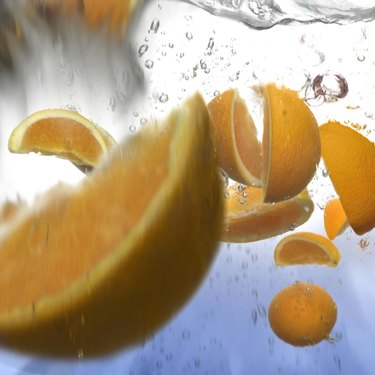Things You'll Need
Knife
Sieve
Bowl

Oranges are a terrific citrus fruit full of vitamin C, and their sweetness means that most kids enjoy them. While there are a few orange varieties that are seedless, the vast majority have seeds. The method for removing the orange seeds depends on whether you are juicing an orange, intend to use a segment as a garnish or simply cut it up to be eaten.
Garnish or to be Eaten
Step 1
Gently press down on the orange with your hand, and roll the orange around on a table. It makes removing the seeds easier.
Video of the Day
Step 2
Slice the orange in half lengthways with a knife. Cut each half orange into four segments, so you have eight in total. You can see the orange seeds in each segment.
Step 3
Carefully insert the sharp, pointed end of the knife where you can see the orange seeds, and pry out each seed into a small bowl. You find they pop out fairly easily, because you loosened the seeds by rolling the orange on the table.
Juicing
Video of the Day
Step 1
Roll the orange around on a table, and press down on it slightly. This softens the orange, makes it juice easier and loosens the seeds.
Step 2
Put a sieve that has fine mesh into a bowl. Cut the orange in half.
Step 3
Hold the orange just above the sieve. Squeeze the orange hard several times until the juice stops flowing. The orange juice collects in the bowl, and the seeds are kept in the sieve so you have pure orange juice and no seeds.
Tip
Bend each orange segment outward slightly so it opens up the inside of the segment. This enables you to find any hidden seeds. You can cut the orange into more segments if you want to, so you can extract any remaining seeds.
Warning
While the method described in the first section of this article will get out most seeds, it is possible that a few may remain.